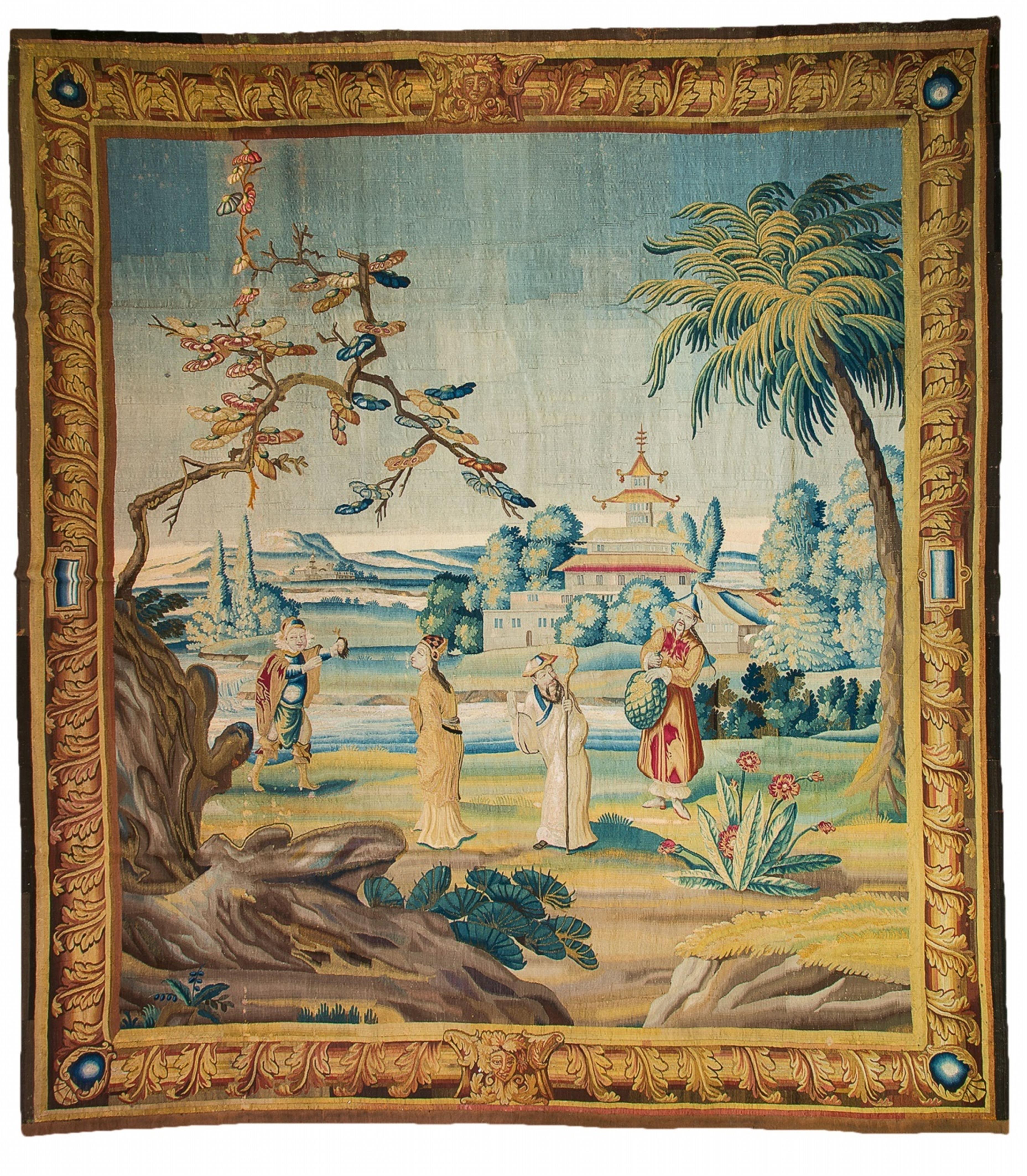A Berlin Chinoiserie tapestry
Polychrome wool and silk. Depicting four figures against a panoramic water landscape with a pagoda. Flanked on each side by a palm and a bizarre flowering shrub. A Chinoiserie style rock formation in the left foreground. Bordered by three-dimensional foliage. Restored, minor additions, backed with linen. H 358, W 316 cm.
Attributed to the Jean Barraban manufactory, designed ca, 1710, probably woven by Charles Vigne, after 1725.
Jean Barraban (1647 - 1709) is thought to have been born in Sedan. He learnt to weave in Aubusson, and it is not known when he moved to Berlin with his son (1677 - 1725) of the same name. In his monograph on Berlin tapestries, Hans Huth mentions Jean Barraband II, the son, as having furnished the old grotto in the Lustgarten, which was later the stock exchange. However, the fact that there are previous records of a tapestry order indicate that a manufactory must have existed before this, of which nothing is known.
The present work has the same border motif as the now lost wall hangings of Schlobitten Palace. In his 2001 essay, Horbas mentions a now lost series of letters between General Alexander Count Dohna-Schlobitten and the court tapestry maker Pierre Marcier, who was commissioned to produce the tapestries. Mercier had to decline, as his commissions for the court had priority, but he recommended Jean Barraban II. Thus, Barraban carried out the commission for the seven wall-hangings, which are now only recorded in photographs, for which he was probably paid in 1713. As the tapestries for the Count were much more detailed, it is thought that the present work is a later addition to the series woven after Jean Barraban's death in 1725 when the workshop was under the management of the merchant Charles Vigne from Berlin.
Literature
Huth, Zur Geschichte der Berliner Wirkteppiche, in Jahrbuch der Preußischen Kunstsammlungen, vol. 56/1935, p. 80 ff.
Recent research on this factory in: Horbas, Tapisserien, in: Herrliche Künste und Manufacturen, Berlin 2001, p. 108 ff.

